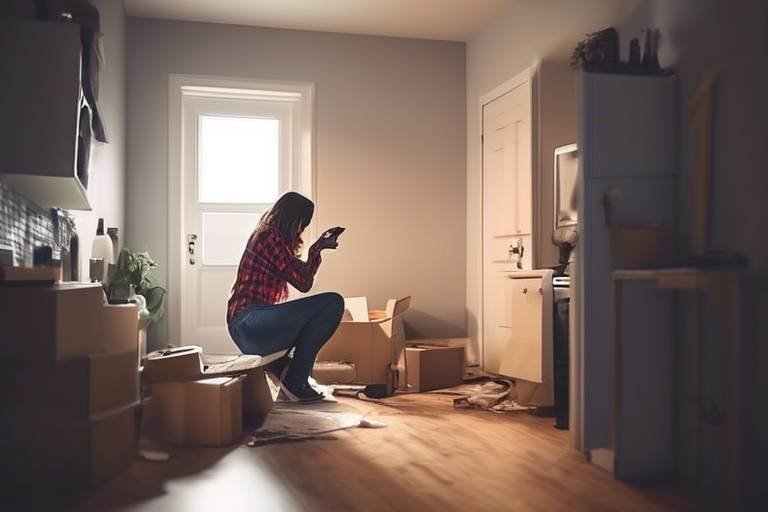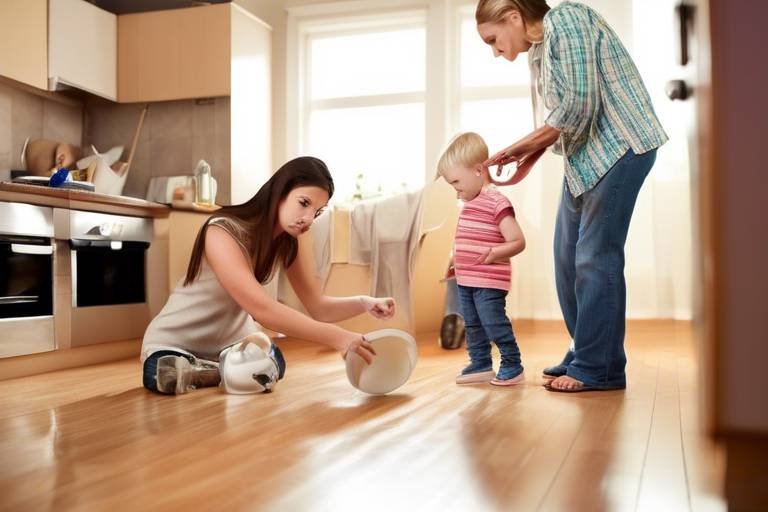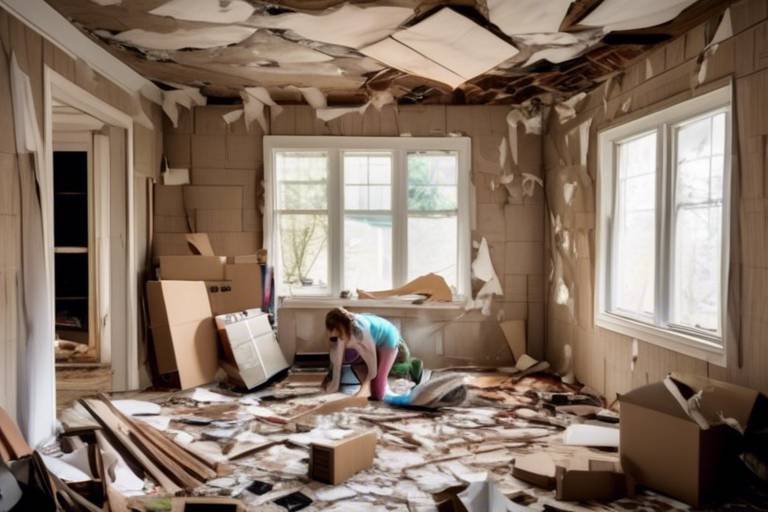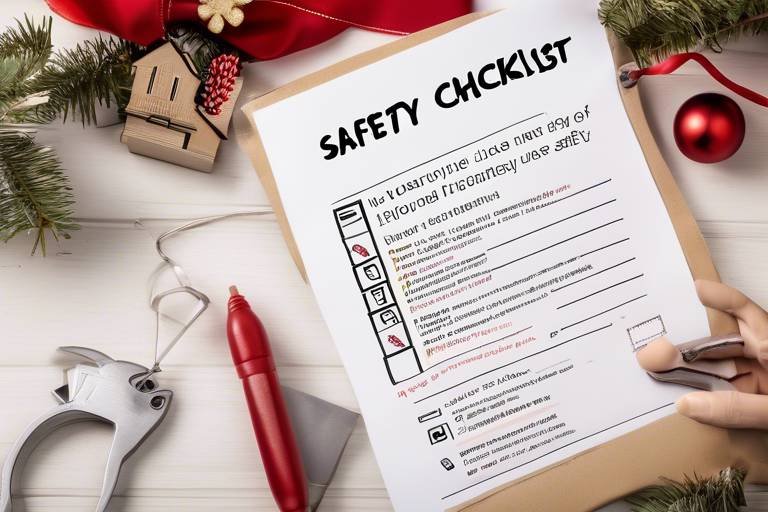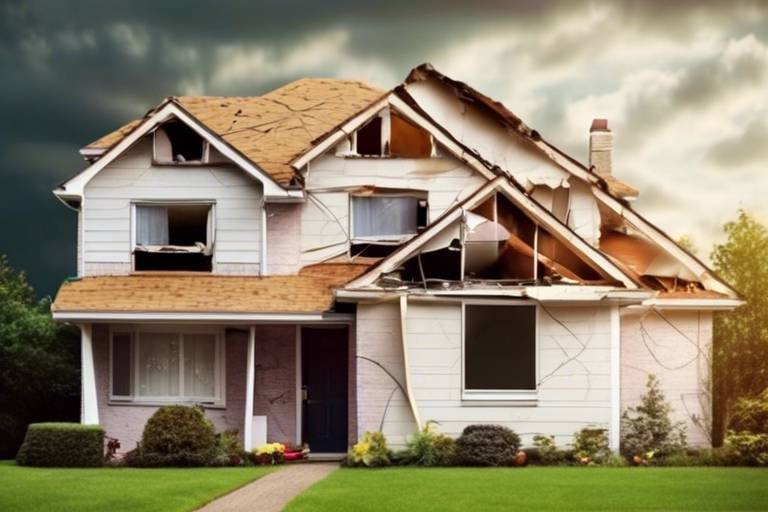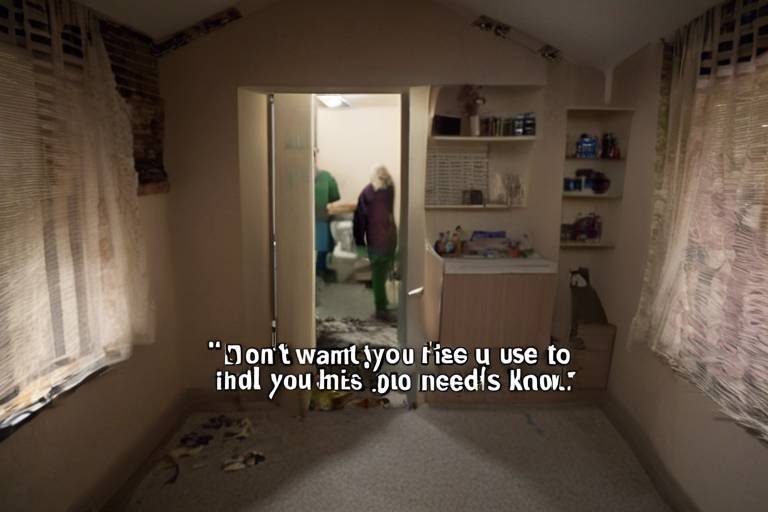Safety Instructions for Backyard Pools
Backyard pools can be a source of endless fun and relaxation for families, but they also come with significant responsibilities. Ensuring safety around pools is not just a matter of following rules; it’s about creating an environment where everyone can enjoy the water without fear. With the right precautions in place, you can turn your backyard into a safe haven for swimming and sunbathing. This article outlines essential safety instructions to ensure a secure and enjoyable experience around backyard pools. Emphasizing prevention and preparedness, these guidelines are vital for families and pool owners alike.
Recognizing potential hazards associated with backyard pools is crucial for prevention. Drowning risks are the most alarming, especially for young children who may not understand the dangers of water. According to the CDC, drowning is a leading cause of unintentional death for children aged 1 to 4. Additionally, slip and fall accidents around the pool area can lead to serious injuries. Understanding these dangers helps in implementing effective safety measures. For instance, a wet surface can quickly turn into a slippery slope, so it’s essential to keep the area dry and free from obstacles.
Installing proper fencing around pools is a fundamental safety measure. Local regulations often dictate the height and type of fencing required to ensure safety. Typically, a fence should be at least 4 feet high and should not have any gaps that a child could slip through. This section discusses local regulations and best practices for fencing to prevent unauthorized access and enhance pool safety. Remember, the goal is to create a barrier that is difficult for children to climb over or crawl under.
Different types of pool fencing offer various levels of safety and aesthetic appeal. Options such as mesh, vinyl, and wrought iron are popular choices among homeowners. Each type has its pros and cons, and the choice often depends on personal preferences, budget, and safety needs. For example, while wrought iron fencing is durable and provides a classic look, mesh fencing offers visibility and can be easily removed when not in use.
Mesh fencing is a popular choice for its visibility and removable features. This type of fencing is often lightweight and can be easily taken down when the pool is not in use, making it a practical option for many families. Moreover, it allows parents to keep an eye on their kids while they play in the yard. The benefits of mesh fencing include portability and enhanced child safety, as it can be adjusted to fit the specific layout of your pool area.
Wrought iron fencing provides durability and security. Not only does it offer a strong barrier to keep children safe, but it also adds a touch of elegance to your backyard. This fencing type is long-lasting and can withstand harsh weather conditions, making it a favored choice for many homeowners seeking both safety and style. However, it’s essential to ensure that the design does not have any sharp edges that could pose a risk to children.
Regular maintenance of pool fencing is essential for ensuring its effectiveness. This includes routine inspections for any damage, such as rust or loose panels, and making necessary repairs promptly. Keeping the fence clean and free from debris is also important. A well-maintained fence not only complies with safety standards but also provides peace of mind for parents and guardians.
Equipping your pool area with safety gear is vital for emergency preparedness. Essential safety equipment includes life rings, first aid kits, and rescue poles. Having these items readily available can significantly enhance pool safety and ensure that you’re prepared for any emergencies that may arise. For instance, a life ring can be a lifesaver if someone struggles in the water, while a first aid kit can provide immediate care for minor injuries.
Life-saving devices are crucial in emergencies. Having accessible flotation devices, such as life jackets and pool noodles, can make a difference in preventing drowning incidents. It’s important to ensure that these devices are in good condition and easy to reach. In a moment of panic, being able to grab a flotation device can be the difference between safety and tragedy.
A well-stocked first aid kit can be a lifesaver in pool-related accidents. Essential items to include in your kit are band-aids, antiseptic wipes, gauze, and scissors. Additionally, it’s wise to have a CPR mask and an emergency contact list readily available. Knowing that you are prepared for any situation can provide a sense of security for both parents and children.
Active supervision is one of the most effective ways to prevent accidents. It’s crucial to have a responsible adult supervising children at all times when they are in or near the pool. This section emphasizes the importance of responsible adult supervision and the role it plays in ensuring pool safety for children. Just like a lifeguard at a public pool, being vigilant can help catch potential dangers before they escalate.
Designating a responsible adult as a water watcher can significantly enhance safety. This person should be free from distractions, such as phones or conversations, and focused solely on the pool area. Having a designated watcher ensures that someone is always keeping an eye on the swimmers, reducing the risk of accidents during pool gatherings.
Teaching children about pool safety is essential for their protection. Effective strategies for educating kids include explaining the importance of not running near the pool, understanding the “buddy system,” and knowing what to do in case of an emergency. By instilling these values early on, you empower children to make safe choices around water, creating a safer environment for everyone.
Q: What is the best type of pool fence for child safety?
A: Mesh fencing is often recommended for child safety due to its visibility and removable features, but wrought iron is also a durable option.
Q: How often should I inspect my pool fencing?
A: It’s advisable to inspect your pool fencing at least once a month for any signs of wear and tear.
Q: What essential items should be in a pool first aid kit?
A: A pool first aid kit should include band-aids, antiseptic wipes, gauze, scissors, and a CPR mask.
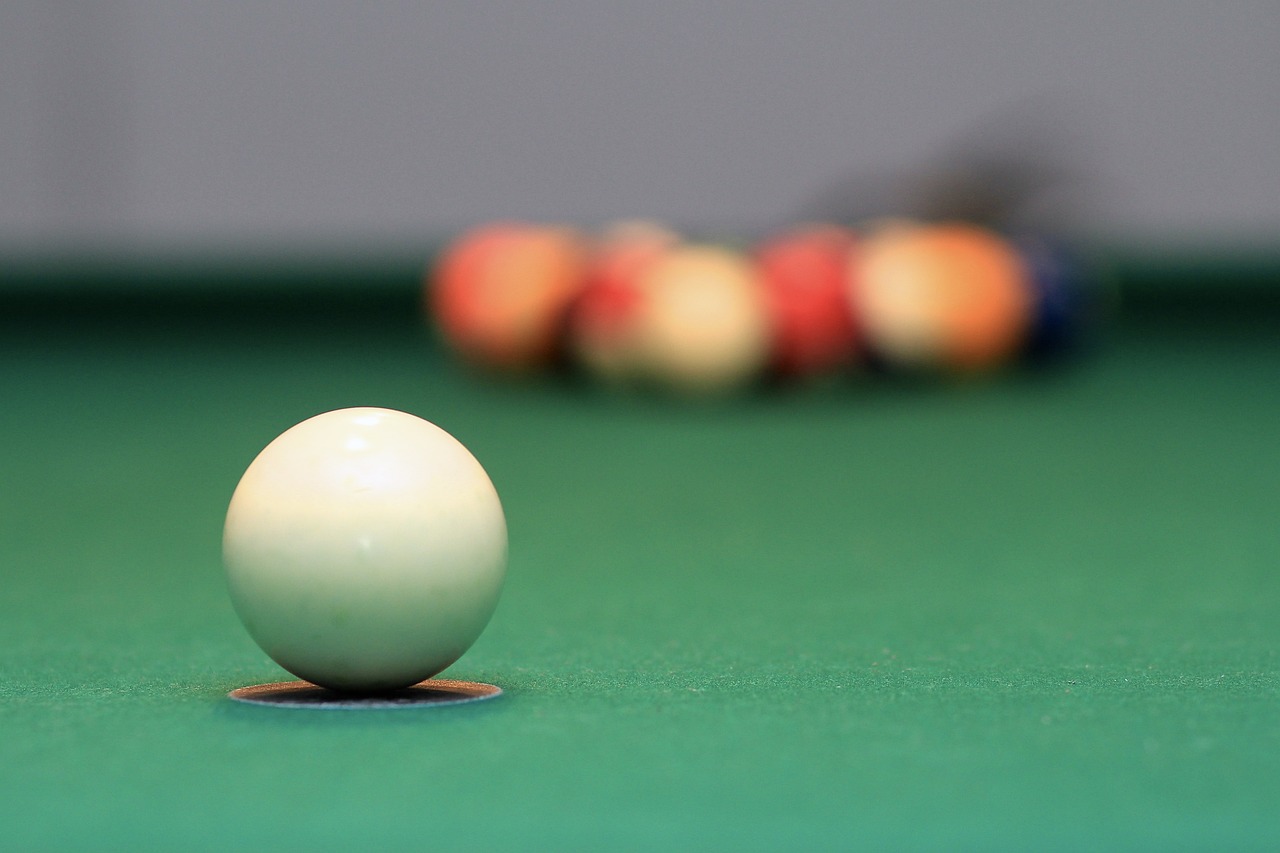
Understanding Pool Dangers
When it comes to backyard pools, the thrill of splashing around can sometimes overshadow the very real dangers that lurk beneath the surface. Understanding these risks is not just wise; it’s essential for anyone who owns or uses a pool. Drowning is perhaps the most alarming danger associated with pools, and it can happen in the blink of an eye. In fact, research shows that most drownings occur when a child is left unsupervised for just a moment. It's a stark reminder that vigilance is key.
But drowning isn’t the only concern. Slip and fall accidents are another significant hazard. Wet surfaces can turn into slippery traps, leading to serious injuries. Imagine running toward the pool, excited for a dip, only to lose your footing and tumble. It’s a scenario no one wants to picture, yet it happens more often than you might think. To mitigate these risks, it's crucial to implement preventive measures.
Moreover, there are hidden dangers that may not be immediately obvious. For instance, pool drains can pose a serious risk, particularly for young children. The powerful suction can lead to entrapment, which is why it’s vital to ensure that your pool is equipped with safety covers and that drain systems are regularly inspected. Additionally, the presence of chemicals for pool maintenance can also be hazardous. Proper storage and handling of these substances are critical to prevent accidental poisoning or skin irritation.
Here’s a quick summary of common pool dangers:
- Drowning: The most critical hazard, especially for children.
- Slip and Fall Accidents: Wet surfaces can lead to serious injuries.
- Drain Entrapment: Powerful suction from drains can be dangerous.
- Chemical Exposure: Pool chemicals must be handled with care.
By understanding these dangers, pool owners can take proactive steps to create a safer environment. This includes installing proper fencing, using safety equipment, and most importantly, maintaining a watchful eye on those enjoying the water. Remember, safety is not just about having the right gear; it’s about fostering a culture of awareness and responsibility. So, before you dive in, take a moment to assess your surroundings and ensure that every precaution is in place. After all, a safe pool is a happy pool!

Pool Fencing Regulations
When it comes to ensuring the safety of your backyard pool, understanding is absolutely crucial. These regulations are designed to protect children and pets from accidental drownings and to provide peace of mind for pool owners. Each state and locality may have its own specific requirements, so it's essential to familiarize yourself with the laws in your area. Generally, fencing must be at least four feet high and should not have any gaps or openings that a small child could slip through. Additionally, the gates should be self-closing and self-latching, making it harder for little ones to access the pool area unsupervised.
Moreover, there are certain materials and designs that are often recommended or even mandated by local building codes. For instance, some areas may require fences to be made of non-climbable materials, while others may allow for mesh or vinyl options. It's important to consider not just the effectiveness of the fence, but also its aesthetic appeal. A well-designed fence can enhance your backyard's overall look while still providing the necessary safety measures. Below is a brief overview of common regulations:
| Regulation Aspect | Common Requirement |
|---|---|
| Height | Minimum of 4 feet |
| Gates | Self-closing and self-latching |
| Materials | Non-climbable, durable materials preferred |
| Spacing | No gaps larger than 4 inches |
Before you start installing any fencing, it is advisable to check with your local government or a certified pool safety inspector. They can provide you with the most current information regarding regulations, which can vary significantly from one place to another. Additionally, some homeowners' associations (HOAs) may have their own rules regarding pool fencing, which could further influence your decisions.
In summary, while installing a pool fence may seem like a straightforward task, adhering to local regulations is vital for ensuring safety and compliance. Not only do these regulations help to protect your loved ones, but they also ensure that you are not liable for any unfortunate incidents that may occur on your property. Always prioritize safety and take the necessary steps to create a secure environment around your pool.
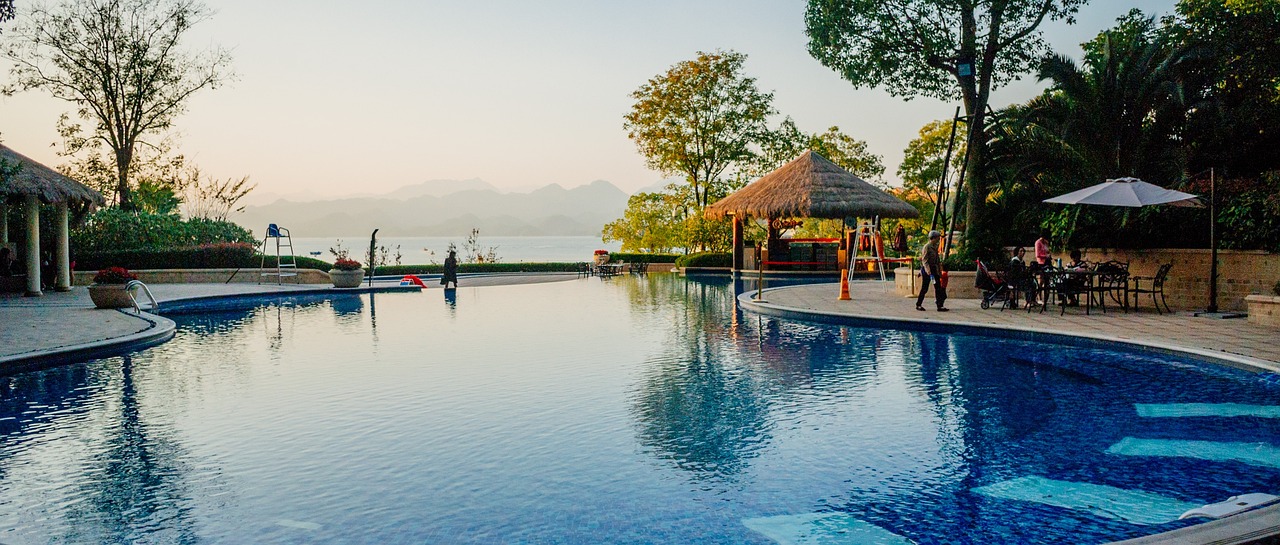
Types of Pool Fencing
When it comes to ensuring the safety of your backyard pool, choosing the right type of fencing is a crucial step. Not only does a well-constructed fence act as a barrier to keep children and pets safe, but it also adds an element of style to your outdoor space. There are several types of pool fencing available, each with its own set of advantages and drawbacks. Let's dive into the most popular options, so you can make an informed decision that suits both your safety needs and aesthetic preferences.
One of the most common choices is mesh fencing. This type of fencing is particularly popular among families with young children due to its visibility and lightweight nature. Mesh fences are designed to be removable, which makes them a flexible option for homeowners who may want to take down the fence during certain seasons or events. However, while mesh fencing offers great transparency, it may not provide the same level of durability as other materials.
On the other hand, wrought iron fencing is renowned for its strength and timeless elegance. This material is incredibly durable, making it a long-lasting investment for pool safety. Wrought iron fences can be customized in various designs, allowing homeowners to choose a style that complements their property. The downside? They can be more expensive than other options and might require regular maintenance to prevent rust and corrosion.
Another option worth considering is vinyl fencing. Vinyl fences are not only attractive but also extremely low-maintenance. Unlike wood, vinyl does not rot, warp, or require painting, making it a practical choice for busy families. However, it’s essential to ensure that the vinyl fencing you choose is specifically designed for pool safety, as not all vinyl options meet the necessary standards.
In summary, when selecting the type of pool fencing, consider the following factors:
- Safety: How effective is the fence at preventing unauthorized access?
- Durability: Will the material withstand weather conditions and wear over time?
- Aesthetics: Does the fence design complement your home and landscaping?
- Cost: What is your budget for installation and maintenance?
Ultimately, the best type of pool fencing for you will depend on your specific needs and preferences. Whether you opt for the visibility of mesh, the classic look of wrought iron, or the low-maintenance benefits of vinyl, prioritizing safety is key. By taking the time to evaluate your options, you can create a secure and inviting environment around your pool that everyone can enjoy.
1. What is the best type of pool fencing for child safety?
The best type of pool fencing for child safety often depends on your specific circumstances, but many families find that mesh fencing provides a good balance of visibility and security.
2. How high should pool fencing be?
Most regulations recommend that pool fencing should be at least 4 feet high to effectively deter children from climbing over.
3. Do I need a permit to install pool fencing?
Yes, many local governments require a permit for pool fencing installation, so it's essential to check your local regulations before proceeding.
4. How often should I inspect my pool fence?
It's advisable to inspect your pool fence at least once a month to ensure there are no gaps, loose parts, or damage that could compromise safety.

Mesh Fencing Advantages
When it comes to ensuring the safety of your backyard pool, mesh fencing stands out as a highly effective option. One of the most significant advantages of mesh fencing is its visibility. Unlike solid barriers, mesh fencing allows for clear sightlines, enabling parents and guardians to easily monitor children and activities around the pool. This transparency not only promotes safety but also fosters a sense of openness in your outdoor space.
Another notable benefit of mesh fencing is its removable nature. Many mesh fences are designed to be easily taken down and reinstalled, making them perfect for families who may want to use their pool area for different purposes throughout the year. For instance, if you're hosting a gathering or need to clear the area for yard work, you can simply remove the fence, making it both practical and versatile.
Moreover, mesh fencing is particularly advantageous for child safety. The material is typically constructed with durable yet lightweight components that can withstand the elements while remaining easy to handle. This means that even if kids try to climb or push against the fence, it’s designed to hold strong, preventing unauthorized access to the pool area. Additionally, many mesh fences come with self-closing and self-latching gates, adding an extra layer of security.
In terms of installation, mesh fencing is often simpler and less invasive compared to other types of fencing. It usually requires fewer tools and can be set up without the need for extensive digging or construction. This makes it an appealing choice for homeowners who want to enhance their pool safety without undergoing a lengthy renovation process.
Lastly, mesh fencing is often more cost-effective than other fencing options like wrought iron or vinyl. With lower material costs and reduced installation fees, mesh fencing can be a budget-friendly solution for families looking to prioritize safety while keeping expenses in check.
In summary, the advantages of mesh fencing for pool safety are numerous. From visibility and portability to child safety and cost-effectiveness, it’s clear that mesh fencing is a smart choice for any pool owner looking to enhance their backyard safety. So, if you’re considering options for your pool area, mesh fencing might just be the solution you’ve been searching for!
- What is mesh fencing made of? Mesh fencing is typically made from durable materials like polyethylene or nylon, designed to withstand outdoor conditions.
- Is mesh fencing easy to install? Yes, mesh fencing is generally easy to install and often requires minimal tools, making it a convenient option for homeowners.
- Can mesh fencing be removed easily? Absolutely! Many mesh fences are designed to be removable, allowing for flexibility in your outdoor space.
- How does mesh fencing compare to other types of fencing? Mesh fencing offers excellent visibility and portability, while other types like wrought iron provide more durability but may lack flexibility.
- Is mesh fencing safe for young children? Yes, mesh fencing is a practical choice for child safety, especially when equipped with self-closing and self-latching gates.

Wrought Iron Fencing Benefits
When it comes to securing your backyard pool, wrought iron fencing stands out as a premier choice that combines both functionality and aesthetic appeal. One of the most significant advantages of wrought iron fencing is its durability. Unlike other materials that may warp, crack, or deteriorate over time, wrought iron offers a robust solution that can withstand the elements and the test of time. This means that once you invest in a wrought iron fence, you can expect it to provide reliable security for many years to come.
Another noteworthy benefit is the security it provides. Wrought iron fences are difficult to climb, making them an effective barrier against unauthorized access. This is particularly important for families with young children or pets, as it helps to keep them safe from potential drowning hazards. The sturdy construction of wrought iron not only deters intruders but also gives peace of mind to pool owners, knowing that their outdoor space is well-protected.
Moreover, wrought iron fencing has a timeless aesthetic that can enhance the overall look of your property. With its elegant designs and intricate detailing, wrought iron can complement various architectural styles, making it a popular choice among homeowners who want to add a touch of class to their outdoor spaces. Whether you prefer a classic or modern look, wrought iron can be customized to fit your vision, allowing you to create a beautiful yet secure environment around your pool.
In terms of maintenance, wrought iron fencing is relatively easy to care for. A simple coat of paint or rust-resistant finish can keep it looking fresh and new. Regular inspections to check for any signs of wear or rust are advisable, but overall, the upkeep is minimal compared to other fencing materials. This means you can spend less time worrying about maintenance and more time enjoying your pool.
To summarize, here are the key benefits of wrought iron fencing:
- Durability: Built to last, resistant to wear and tear.
- Security: Difficult to climb, providing a safe barrier.
- Aesthetic Appeal: Enhances property value with its elegant designs.
- Low Maintenance: Easy to care for with minimal upkeep required.
In conclusion, if you're considering options for pool fencing, wrought iron offers a compelling combination of strength, beauty, and security. It's a long-term investment that not only protects your loved ones but also elevates the overall charm of your outdoor space. By choosing wrought iron, you’re not just installing a fence; you’re making a statement about the safety and style of your home.
1. How long does wrought iron fencing last?
Wrought iron fencing can last for decades when properly maintained, making it a durable choice for pool safety.
2. Is wrought iron fencing expensive?
While the initial investment may be higher than other materials, its longevity and low maintenance costs often make it more economical in the long run.
3. Can I customize the design of wrought iron fencing?
Yes! Wrought iron fencing can be customized to fit various styles and preferences, allowing homeowners to create a unique look.
4. How do I maintain wrought iron fencing?
Regular inspections for rust, along with occasional repainting or applying rust-resistant coatings, will keep your fence looking great.
5. Is wrought iron fencing safe for children?
Yes, its sturdy construction provides a secure barrier that is difficult for children to climb, enhancing overall safety around pools.
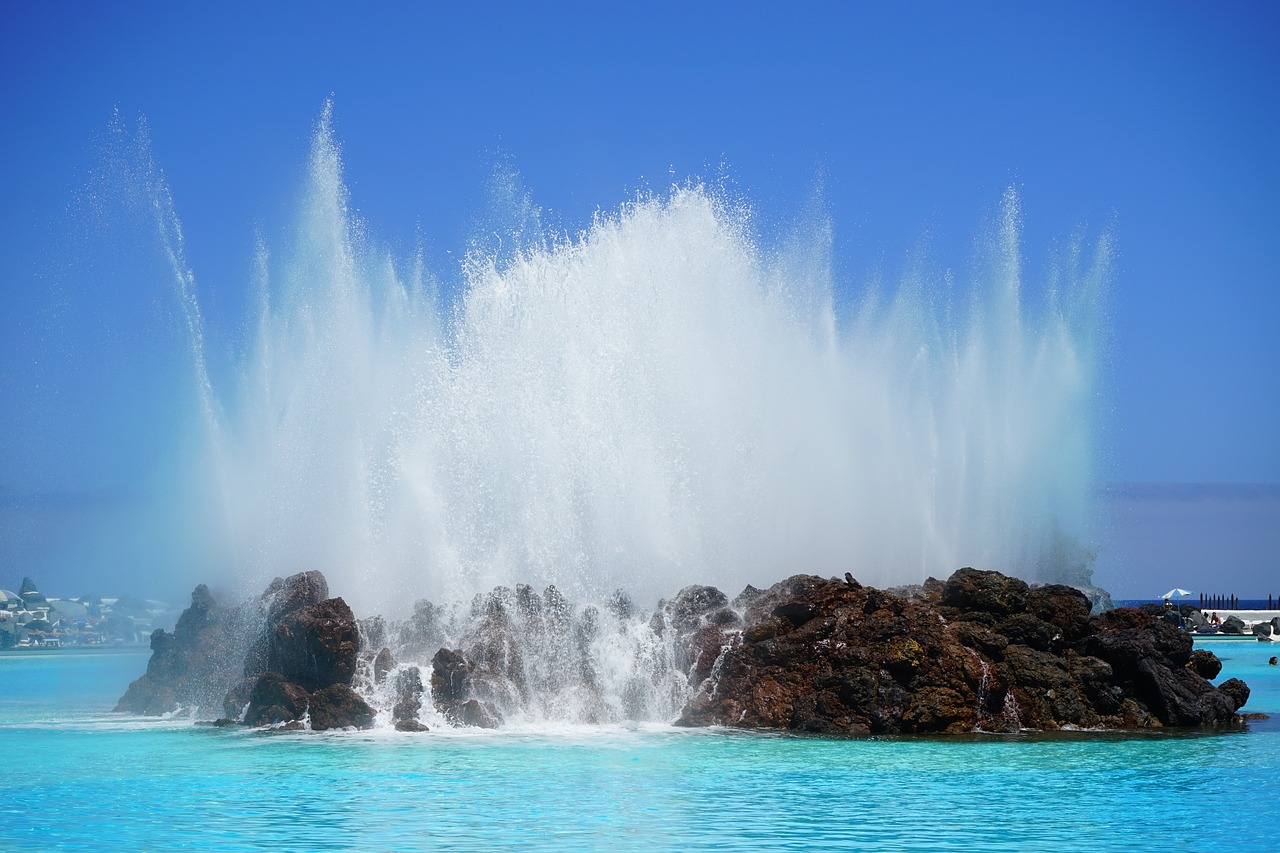
Maintaining Pool Fencing
Maintaining your pool fencing is not just a chore; it's a crucial part of ensuring the safety of everyone who enjoys your backyard oasis. Think of your pool fence as the first line of defense against accidents. Just like you wouldn’t drive a car without regular maintenance, your pool fence requires routine checks to function effectively. It’s not enough to install a fence and forget about it; proactive upkeep can save lives!
Start by scheduling regular inspections of your fencing. Look for signs of wear and tear, such as rust on metal fences or fraying on mesh fences. These issues can compromise the integrity of the fence and, consequently, the safety of your pool area. If you notice any damage, address it immediately. For instance, a small rust spot can quickly escalate into a larger problem if left untreated. Keep in mind that a well-maintained fence not only enhances safety but also boosts the aesthetic appeal of your backyard.
Another important aspect of pool fence maintenance is ensuring that the gates are functioning properly. Gates should close securely and latch automatically. This is where many accidents happen—an improperly closed gate can allow children or pets easy access to the pool area. Regularly check the hinges and latches, and lubricate them to prevent sticking or jamming.
It’s also wise to familiarize yourself with local regulations regarding pool fencing. These regulations can change, and staying informed ensures that your fence remains compliant. You might even find that some areas have specific requirements for the height and type of fencing, which can affect your choice of materials. Keeping up with these standards not only protects your loved ones but also keeps you on the right side of the law.
For those who have opted for removable fencing, ensure that you are diligent about setting it up and taking it down as needed. While these fences offer flexibility, they also require responsible handling. Always double-check that the fencing is securely in place before allowing anyone near the pool.
In summary, maintaining your pool fencing involves a combination of regular inspections, prompt repairs, and compliance with local regulations. By treating your pool fence with the respect it deserves, you can create a safer environment for family and friends to enjoy the water without worry.
- How often should I inspect my pool fence? It is recommended to inspect your pool fence at least twice a year, ideally before the swimming season begins.
- What should I look for during an inspection? Check for rust, loose panels, broken latches, and any signs of wear that might compromise safety.
- Are there specific regulations for pool fencing in my area? Yes, local regulations can vary significantly, so it's essential to check with your local authorities for specific requirements.
- What materials are best for pool fencing? The best materials depend on your preferences and needs. Common options include mesh, vinyl, and wrought iron, each with its own advantages.
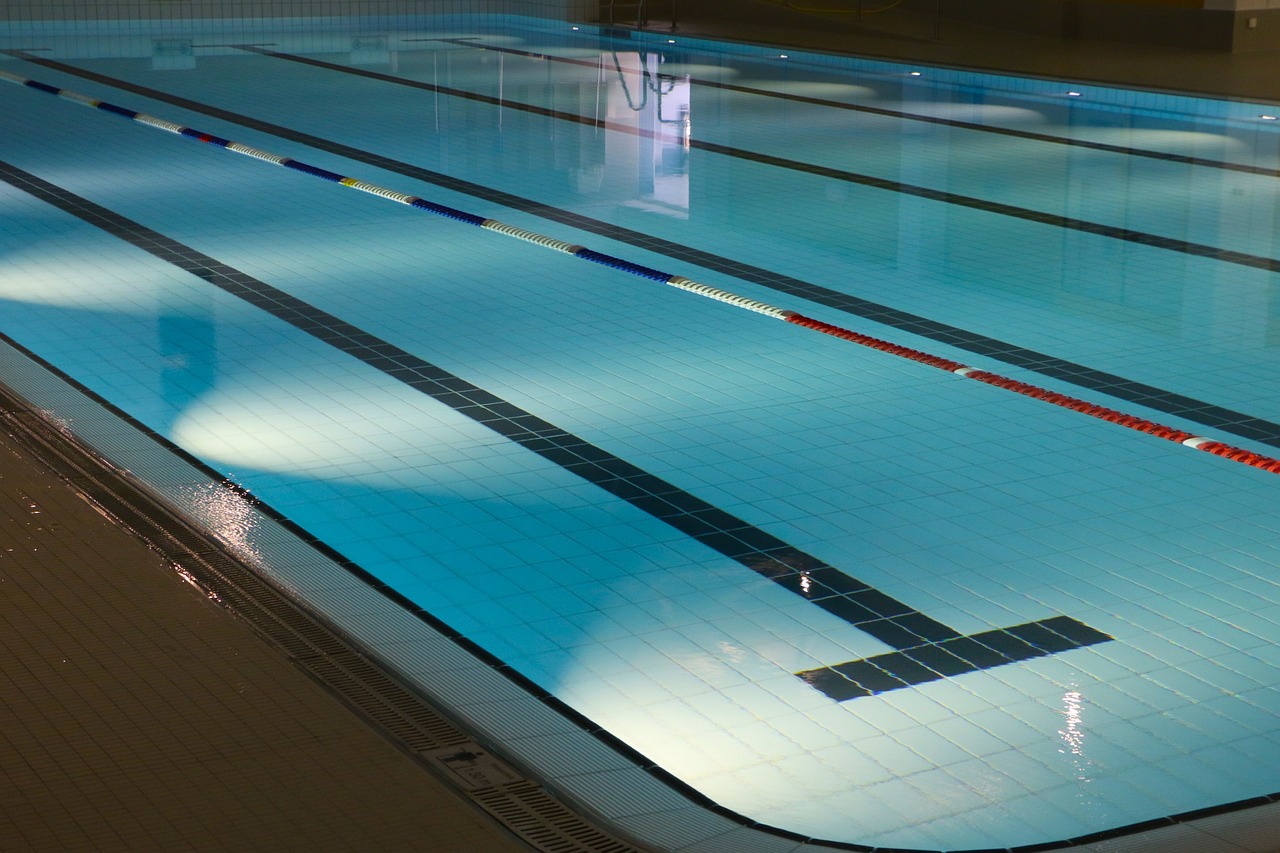
Pool Safety Equipment
When it comes to ensuring a safe environment around your backyard pool, having the right safety equipment is absolutely essential. Think of it as your pool’s first line of defense against accidents and emergencies. Just like how you wouldn’t venture out into a storm without an umbrella, you shouldn’t dive into pool season without being fully prepared. This section will explore the must-have safety gear that every pool owner should consider to enhance safety and readiness.
One of the most crucial items you should have on hand is a life ring. These devices are designed to provide flotation assistance in case someone finds themselves struggling in the water. Imagine a life ring as your pool's superhero—always ready to swoop in and save the day. It’s vital to ensure that this lifesaving device is easily accessible and visible, so anyone can grab it quickly in an emergency.
In addition to life rings, a well-stocked first aid kit is indispensable. Accidents can happen in the blink of an eye, and being prepared can make all the difference. A comprehensive first aid kit should include items such as:
- Adhesive bandages of various sizes
- Antiseptic wipes
- Gauze pads and tape
- Scissors and tweezers
- Instant cold packs
Having these supplies readily available not only provides peace of mind but also equips you to handle minor injuries that may occur around the pool area. Think of it as your safety toolbox—ready to tackle any small mishap that might arise.
Another essential piece of equipment is a rescue pole. This long pole can be a game changer in emergency situations, allowing you to reach someone in distress without putting yourself at risk. When seconds count, having a rescue pole on hand can literally mean the difference between life and death. It’s like having an extension of your arm, giving you the ability to help someone in need while staying safe yourself.
Now, let’s not forget about pool alarms. These devices serve as an additional layer of security, alerting you if someone enters the water unexpectedly. They act like a vigilant guardian, always on the lookout, and can be especially useful if you have young children or pets. The peace of mind that comes from knowing you’ll be alerted to any unauthorized access to the pool area is invaluable.
In conclusion, equipping your pool area with the right safety gear is not just a good idea—it’s a necessity. By investing in lifesaving devices such as life rings, first aid kits, rescue poles, and pool alarms, you’re taking proactive steps to protect your loved ones and ensure a safe swimming environment. So, as you prepare for another fun-filled summer by the pool, remember that safety should always take center stage.
Q: What is the most important piece of safety equipment for a pool?
A: While all safety equipment is important, a life ring is often considered the most critical as it provides immediate flotation assistance in an emergency.
Q: How often should I check my first aid kit?
A: It’s recommended to check your first aid kit at least once a month to ensure that all supplies are stocked and not expired.
Q: Are pool alarms really effective?
A: Yes, pool alarms can be very effective in alerting you to unauthorized access, especially for young children, providing an extra layer of safety.

Life-Saving Devices
When it comes to ensuring safety around backyard pools, are not just optional; they are essential. Imagine a sunny day, laughter echoing as children splash in the water, and suddenly, an accident occurs. In those critical moments, having the right equipment can mean the difference between a close call and a tragedy. That’s why equipping your pool area with accessible flotation devices, rescue poles, and other safety gear is crucial.
First and foremost, let’s talk about flotation devices. Items like life rings and pool noodles aren’t just fun accessories; they are vital tools that can help keep someone afloat in an emergency. A life ring, for instance, can be thrown to a person in distress, providing them with a buoyant object to cling to while waiting for help. It’s important to ensure that these devices are readily available and not tucked away in a shed or garage. Place them in visible and accessible locations around the pool area.
Additionally, having a rescue pole is another critical piece of equipment. This long pole, often equipped with a hook, allows for reaching someone who may be struggling in the water without putting yourself in danger. It’s like having a lifeline at your fingertips. Just as you wouldn’t drive a car without a spare tire, you shouldn’t have a pool without these essential tools.
Moreover, it’s not just about having these devices; it’s also about ensuring they are in good condition. Regularly inspect your life-saving equipment for any signs of wear and tear. A frayed rope on a life ring or a broken rescue pole can render these devices ineffective when they are needed the most. To help you keep track of your maintenance routine, consider creating a simple checklist:
| Device | Inspection Frequency | Notes |
|---|---|---|
| Life Rings | Monthly | Check for wear and ensure they are inflated and accessible. |
| Rescue Poles | Monthly | Inspect for damage; ensure the hook is secure. |
| First Aid Kits | Quarterly | Restock supplies and check expiration dates. |
In addition to these devices, it’s wise to have a first aid kit on hand. While it may not directly save someone from drowning, it can be crucial in treating injuries that may occur during pool activities. Ensure your first aid kit is stocked with essentials like adhesive bandages, antiseptic wipes, and emergency contact numbers. This way, you’ll be prepared for any situation that arises.
In conclusion, life-saving devices are a fundamental part of pool safety. They are not just accessories but rather essential tools that can help save lives. By ensuring that these devices are available, in good condition, and easily accessible, you are taking a significant step toward a safer pool environment for everyone. Remember, safety is not just a responsibility; it’s a commitment to protecting those you love while enjoying the fun and relaxation that your backyard pool brings.
- What types of life-saving devices should I have around my pool?
It’s recommended to have life rings, rescue poles, and a well-stocked first aid kit. - How often should I inspect my life-saving devices?
Life rings and rescue poles should be inspected monthly, while first aid kits should be checked quarterly. - Where should I store my life-saving devices?
They should be stored in easily accessible locations around the pool, visible to everyone.
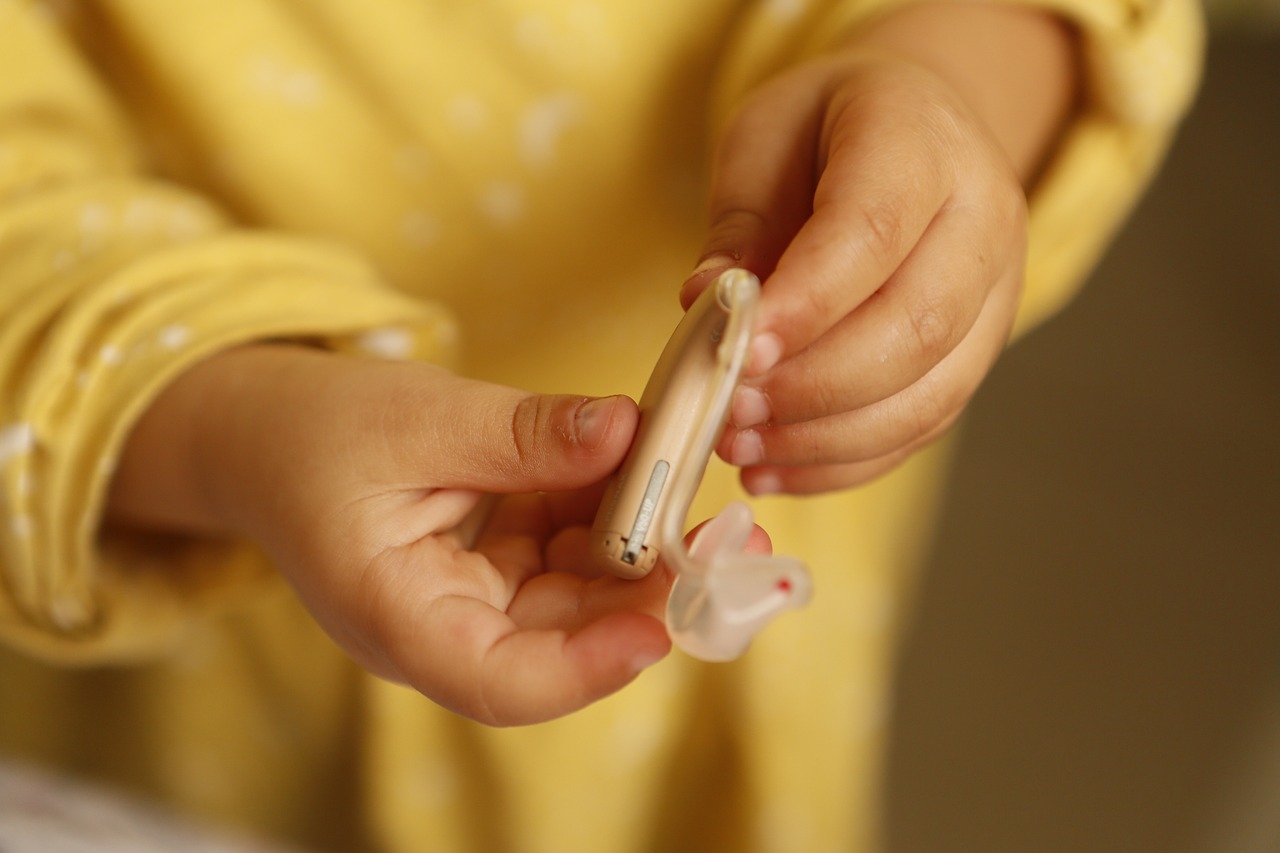
First Aid Kits Essentials
When it comes to ensuring safety around your backyard pool, having a well-stocked first aid kit is not just a good idea—it's essential! Imagine a scenario where a minor accident occurs. Having the right supplies on hand can turn a potential crisis into a manageable situation. So, what should be in your first aid kit to make it truly effective? Let's dive into the essentials!
Your first aid kit should be easily accessible yet out of reach of young children. It’s crucial to check and replenish your kit regularly, ensuring that all items are up-to-date and functional. Below are some key items you should include:
- Adhesive Bandages: These are your go-to for minor cuts and scrapes. They come in various sizes, so make sure to have a selection.
- Antiseptic Wipes: Perfect for cleaning wounds to prevent infection, these wipes are a must-have in any first aid kit.
- Gauze Pads and Tape: For larger wounds, having gauze pads and medical tape is essential to keep the area covered and protected.
- Hydrocortisone Cream: This can help with itching and inflammation, especially useful for insect bites or rashes.
- Instant Cold Packs: These are great for reducing swelling and numbing pain from injuries.
- CPR Face Shield: In emergencies where CPR may be necessary, having a face shield can protect both the rescuer and the victim.
- First Aid Manual: A guide can be invaluable in emergencies, providing step-by-step instructions on how to handle various situations.
In addition to these essentials, consider including items specific to your family’s needs. For instance, if anyone has allergies, having an epinephrine auto-injector (like an EpiPen) on hand can be a lifesaver. Similarly, if you have young children, adding pediatric supplies, such as smaller bandages or child-friendly antiseptics, can make your kit more effective.
Remember, the goal of a first aid kit is not just to treat injuries but to provide peace of mind. Knowing that you are prepared for minor mishaps can greatly enhance your enjoyment of the pool, allowing you to focus on fun and relaxation rather than worry. So, take the time to assemble a comprehensive first aid kit and ensure it’s ready for any situation that may arise.
In conclusion, a well-equipped first aid kit is a crucial component of pool safety. By preparing for the unexpected, you can create a safer environment for your family and guests. Always keep your first aid kit stocked, check it regularly, and educate everyone on its location and contents. Being prepared is the best way to enjoy your backyard pool safely!
Q: How often should I check my first aid kit?
A: It’s recommended to check your first aid kit at least every three months to ensure all items are in good condition and not expired.
Q: Where should I store my first aid kit?
A: Store your first aid kit in a cool, dry place that is easily accessible but out of reach of children. A waterproof container is ideal for poolside storage.
Q: Should I include medication in my first aid kit?
A: It’s best to avoid including medications in a general first aid kit, as they can expire and may not be suitable for everyone. Instead, keep personal medications in a separate, clearly labeled container.

Supervision and Responsibility
When it comes to backyard pools, active supervision is not just a good idea; it's a necessity. Imagine a sunny day, laughter echoing, and children splashing in the water. It’s a scene of joy, but it can turn dangerous in the blink of an eye. Drowning can happen quickly and silently, making vigilant supervision essential for safety. As a responsible pool owner, you must always keep an eye on your swimmers, especially young children who may not yet understand the risks associated with water.
One effective strategy to enhance safety is to designate a water watcher. This is a responsible adult whose sole job is to monitor the pool area without distractions. Whether it's a family gathering or a neighborhood pool party, having a dedicated person ensures that someone is always focused on the swimmers. This practice can significantly reduce the likelihood of accidents. In fact, studies show that drowning incidents decrease when there is a designated supervisor. So, why not create a schedule or a rotation among adults to ensure everyone takes their turn? This way, everyone can enjoy the fun while keeping a watchful eye.
But supervision isn't just about being present; it’s also about being engaged. It’s important to actively interact with the children in the pool, reminding them of safety rules and encouraging safe play. For instance, teaching them to avoid running near the pool, jumping in only when it's safe, and knowing how to float can empower them and enhance their safety awareness. You can even create fun games that incorporate safety lessons, making it both educational and enjoyable.
Educating children about pool safety is equally vital. Start by discussing the importance of swimming with a buddy and never going into the pool without an adult present. You might even consider enrolling them in swimming lessons, which can build their confidence and skills in the water. As they learn to swim better, they will become more aware of their limits and the importance of following safety rules.
In addition to supervision and education, it's also essential to maintain a safe environment around the pool. This means ensuring that the area is free of toys, floaties, or other items that might tempt children to play unsupervised. A clean and organized pool area minimizes distractions and helps keep everyone focused on safety. Furthermore, consider having safety equipment readily available, such as life rings and rescue poles, so that help is nearby in case of an emergency.
In conclusion, supervision and responsibility are cornerstones of pool safety. By designating a water watcher, engaging with children, educating them on safety, and maintaining a safe environment, you can create a fun and secure atmosphere around your backyard pool. Remember, it only takes a moment for an accident to happen, so stay vigilant and ensure that your pool remains a place of joy and safety.
- What is a water watcher? A water watcher is a designated adult responsible for supervising the pool area without distractions to ensure the safety of swimmers.
- How can I teach my child about pool safety? Engage in conversations about safety rules, enroll them in swimming lessons, and create fun games that incorporate safety lessons.
- What safety equipment should I have near my pool? Essential safety equipment includes life rings, rescue poles, and a well-stocked first aid kit.
- How often should I check my pool safety equipment? Regularly inspect your safety equipment every few weeks to ensure it's in good condition and ready for use.

Designating a Water Watcher
When it comes to ensuring safety around backyard pools, one of the most effective strategies is to designate a water watcher. This is not just a title; it’s a crucial responsibility that can make all the difference in preventing accidents. Think of the water watcher as the lifeguard of your backyard—someone whose sole focus is to keep an eye on the swimmers, especially children who may not yet have the skills to stay safe in the water. By having a designated person to watch over pool activities, you create a safer environment for everyone involved.
But what exactly does a water watcher do? Their primary role is to actively supervise all individuals in and around the pool. This means no distractions—no texting, no chatting with friends, and definitely no diving into the latest episode of your favorite show. The water watcher should be fully present, scanning the pool area for any signs of distress or danger. It’s essential that this person understands the importance of their role and is committed to prioritizing safety above all else.
To make this easier, consider establishing a water watcher rotation during gatherings. This way, everyone gets a turn, and no one feels overwhelmed by the responsibility. You might even want to create a simple schedule that outlines who is watching when. Here’s a quick example:
| Time | Water Watcher |
|---|---|
| 1:00 PM - 1:30 PM | John |
| 1:30 PM - 2:00 PM | Sarah |
| 2:00 PM - 2:30 PM | Mike |
| 2:30 PM - 3:00 PM | Lisa |
Another effective strategy is to provide training for anyone who will be designated as a water watcher. This can include basic swimming skills, CPR, and first aid training. Knowing how to respond in an emergency can significantly increase the chances of preventing a tragedy. Plus, it instills confidence in the watcher, making them more vigilant and prepared to act if necessary.
In addition to designating a water watcher, it’s equally important to educate children about the significance of this role. Children should understand that even though someone is watching them, they still need to follow safety rules. Teach them to respect the water and recognize when they should ask for help. Reinforcing these lessons can help cultivate a culture of safety that extends beyond just your backyard pool.
In conclusion, designating a water watcher is a simple yet highly effective way to enhance safety around your pool. By ensuring that someone is always keeping a close eye on swimmers, you can significantly reduce the risk of accidents. So, the next time you host a pool party, take a moment to assign this vital role. It’s a small step that can lead to big safety improvements!
- What qualifications should a water watcher have? Ideally, they should be a competent swimmer and may benefit from CPR and first aid training to handle emergencies effectively.
- Can children be designated as water watchers? While children can help keep an eye on younger siblings, it’s crucial that a responsible adult is always present to supervise actively.
- How often should we rotate water watchers? It’s best to rotate every 30 minutes to ensure that the watcher stays alert and engaged.
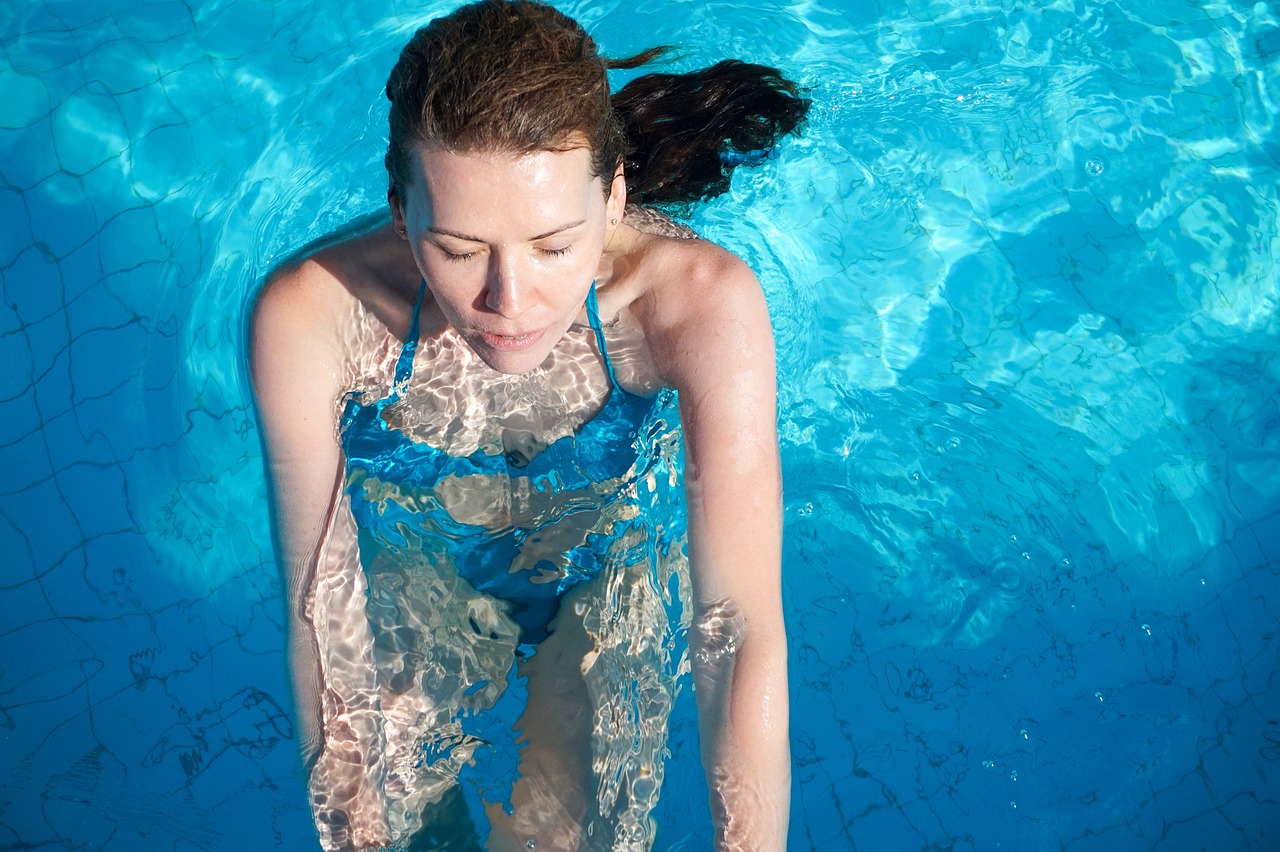
water watcher
When it comes to ensuring safety around backyard pools, one of the most effective strategies is to designate a responsible adult as a . This role is not just a title; it’s a commitment to vigilance and proactive supervision. Imagine a lifeguard at a beach, constantly scanning the water for any signs of trouble. That’s the level of attention a water watcher should maintain. With children often splashing around and having fun, it’s easy to lose track of what’s happening in the pool, which can lead to dangerous situations.
So, what does it mean to be a water watcher? It means being fully engaged and ready to respond to any potential accidents that may occur. This person should avoid distractions, such as texting or engaging in deep conversations, and instead focus solely on the safety of those in the water. It’s essential that everyone at the pool understands the importance of this role. By designating a water watcher, you create a culture of safety that prioritizes the well-being of all swimmers.
To help clarify the responsibilities of a water watcher, here are some key points to consider:
- Stay Alert: Always keep your eyes on the pool and the people in it. Look out for signs of distress or unusual behavior.
- Know How to Respond: Be familiar with basic rescue techniques and CPR. Knowing how to act quickly can save lives.
- Limit Distractions: Avoid using your phone or engaging in activities that take your attention away from the pool.
- Rotate Responsibilities: If you’re hosting a pool party, consider rotating the water watcher role among responsible adults to ensure continuous supervision.
While it might seem like a straightforward task, the role of a water watcher can significantly reduce the risk of accidents. By having someone dedicated to monitoring the pool, you can enjoy peace of mind while your family and friends have fun. Remember, drowning can happen quickly and silently, so every second counts. Make sure to communicate the importance of this role to everyone present, so they understand that safety is a shared responsibility.
Q: What should I do if I notice someone struggling in the pool?
A: Immediately alert the water watcher or any responsible adult and prepare to assist. If necessary, call for emergency help while keeping an eye on the individual in distress.
Q: Can a water watcher take breaks?
A: While it’s important to stay vigilant, it’s also crucial to avoid fatigue. Designate someone to take over the role periodically, ensuring that someone is always watching the pool.
Q: How can I teach my kids about the importance of a water watcher?
A: Involve them in discussions about pool safety and explain the role of the water watcher. Use fun examples to highlight how this person helps keep everyone safe.

can significantly enhance safety. This subsection discusses the importance of this role and how it can help prevent accidents during pool gatherings.
This article outlines essential safety instructions to ensure a secure and enjoyable experience around backyard pools. Emphasizing prevention and preparedness, these guidelines are vital for families and pool owners alike.
Recognizing potential hazards associated with backyard pools is crucial for prevention. From drowning risks to slip and fall accidents, understanding these dangers helps in implementing effective safety measures.
Installing proper fencing around pools is a fundamental safety measure. This section discusses local regulations and best practices for fencing to prevent unauthorized access and enhance pool safety.
Different types of pool fencing offer various levels of safety and aesthetic appeal. This subsection explores options such as mesh, vinyl, and wrought iron, highlighting their pros and cons.
Mesh fencing is a popular choice for its visibility and removable features. This section discusses its benefits, including portability and child safety, making it a practical option for many families.
Wrought iron fencing provides durability and security. This subsection examines its long-lasting nature and classic aesthetic, making it a favored choice for many homeowners seeking both safety and style.
Regular maintenance of pool fencing is essential for ensuring its effectiveness. This section covers inspection routines and repair tips to keep fences in optimal condition and compliant with safety standards.
Equipping your pool area with safety gear is vital for emergency preparedness. This section outlines essential safety equipment such as life rings, first aid kits, and rescue poles to enhance pool safety.
Life-saving devices are crucial in emergencies. This subsection discusses the importance of having accessible flotation devices and how they can make a difference in preventing drowning incidents.
A well-stocked first aid kit can be a lifesaver in pool-related accidents. This section highlights key items to include in your kit, ensuring you are prepared for any emergencies that may arise.
Active supervision is one of the most effective ways to prevent accidents. This section emphasizes the importance of responsible adult supervision and the role it plays in ensuring pool safety for children.
Designating a responsible adult as a water watcher can significantly enhance safety. This role is not just about keeping an eye on the pool; it’s about being actively engaged in monitoring the activities of swimmers, especially children. When you have a designated water watcher, you create a focused environment where someone is solely responsible for ensuring that everyone in the pool is safe. This can be particularly important during pool gatherings, where distractions abound and the risk of accidents can increase.
Think of the water watcher as the lifeguard of your backyard party. They should be someone who is attentive and free from distractions like phones or conversations that can take their focus away from the pool. This dedicated supervision can make all the difference in preventing accidents. Here are some key points to consider regarding the role of a water watcher:
- Active Monitoring: The water watcher should maintain constant visual contact with the swimmers, ready to respond quickly if needed.
- Limit Distractions: Encourage the water watcher to avoid engaging in conversations or using mobile devices while on duty.
- Educate on Safety: Make sure the water watcher is aware of pool safety rules and knows how to react in emergencies.
By implementing this simple yet effective strategy, you can significantly reduce the risk of accidents during pool gatherings. Remember, a few moments of distraction can lead to serious consequences, and having a dedicated water watcher ensures that someone is always present to react swiftly if a situation arises.
Teaching children about pool safety is essential for their protection. This section covers effective strategies for educating kids on safe behaviors and the importance of following rules around water.
- What is the most important safety measure for pool owners? The most important safety measure is to ensure constant supervision, especially for young children.
- How often should pool fencing be inspected? Pool fencing should be inspected regularly, at least once a month, to ensure it is in good condition.
- What should be included in a pool first aid kit? A pool first aid kit should include band-aids, antiseptic wipes, gauze, a rescue blanket, and a CPR mask.
- Can mesh fencing be used for above-ground pools? Yes, mesh fencing is a great option for above-ground pools as it is portable and can be easily removed when not in use.
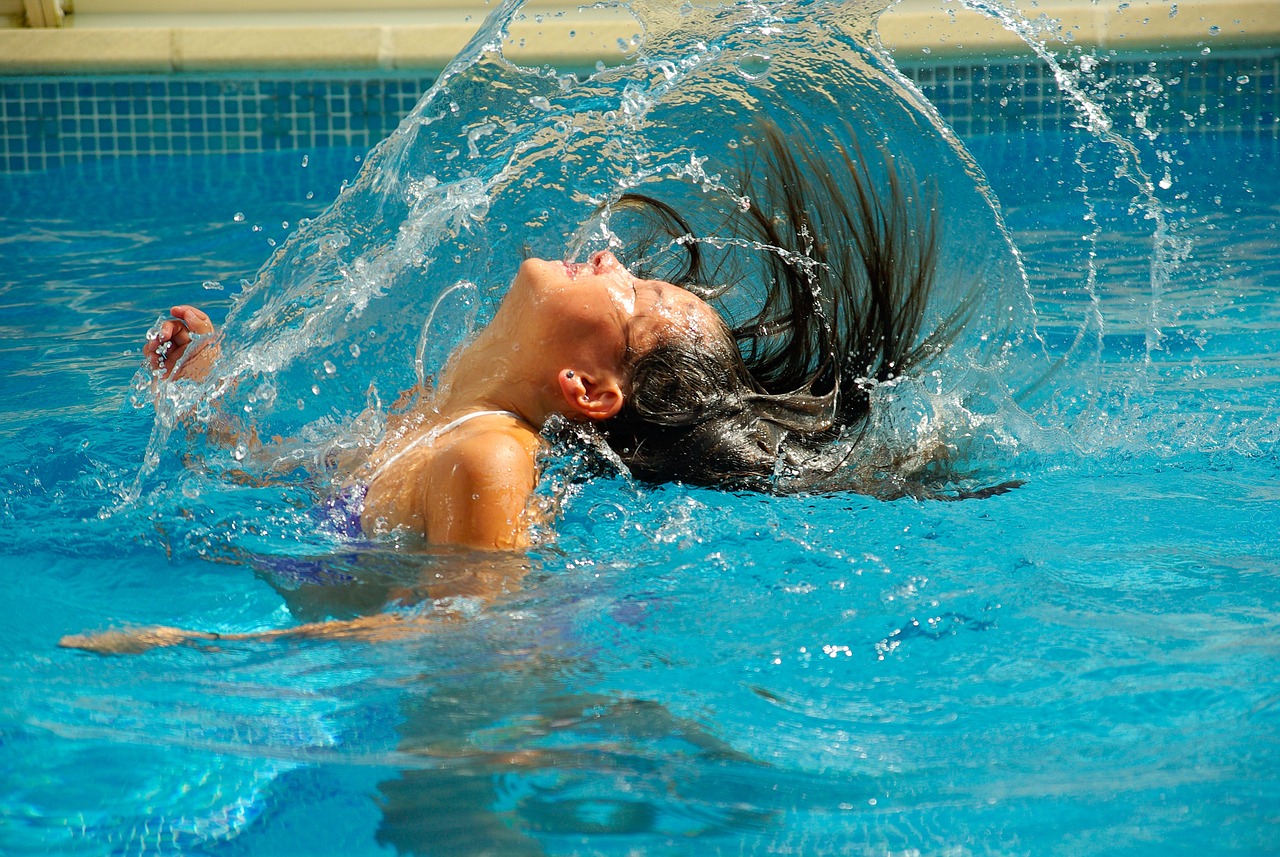
Educating Children About Pool Safety
Teaching children about pool safety is not just a good idea; it’s an absolute necessity! Just like learning to look both ways before crossing the street, understanding the potential dangers of a backyard pool can save lives. Kids are naturally curious and may not fully grasp the risks associated with water. This is where **education** comes into play. By instilling safe practices and knowledge about pool behavior, we empower them to make smarter choices around water.
Start by having open conversations with your children about the **importance of safety**. Explain to them that pools can be fun but also come with responsibilities. Use relatable analogies—like comparing the pool to a busy street where they need to be cautious. You could say, “Just like we hold hands when we cross the street, we need to stay close to an adult when we’re near the pool.” This approach helps them understand that safety is a shared responsibility.
Incorporating **interactive learning** can also make a significant impact. Consider organizing pool safety drills where children can practice what to do in an emergency. For example, you might teach them how to call for help or where to find the flotation devices. Make it fun! Use games or role-playing scenarios to reinforce these lessons. Kids are more likely to remember safety tips when they are engaged and having a good time.
Another effective strategy is to establish **clear rules** about pool behavior. Sit down as a family and create a list of do's and don'ts, such as:
- Always swim with a buddy.
- No running around the pool area.
- Never dive into shallow water.
- Always ask an adult before going into the pool.
Display this list in a prominent place near the pool as a constant reminder. Encourage your children to memorize these rules and hold them accountable. Create a reward system for following the safety rules, which can motivate them to take the guidelines seriously.
Lastly, consider enrolling your children in swimming lessons. Not only do these lessons teach them how to swim, but they also cover essential safety skills. Knowing how to float, tread water, and swim to safety can be the difference between a close call and a tragedy. Plus, it builds their confidence in the water, allowing them to enjoy the pool responsibly.
In summary, educating children about pool safety is crucial for preventing accidents and ensuring that everyone can enjoy the pool safely. By combining discussion, interactive learning, clear rules, and swimming lessons, you can equip your kids with the knowledge and skills they need to stay safe around water.
Q: At what age should I start teaching my child about pool safety?
A: It's never too early to start! Begin discussing pool safety as soon as your child is old enough to understand basic instructions, typically around age 3 or 4.
Q: How can I make pool safety education fun for my kids?
A: Use games, role-playing, and interactive drills to make learning about pool safety enjoyable. Incorporate storytelling and analogies that resonate with their everyday experiences.
Q: Should I enroll my child in swimming lessons?
A: Absolutely! Swimming lessons not only teach essential swimming skills but also cover safety protocols, helping your child feel more confident and secure in the water.
Q: What are some common pool safety rules I should teach my kids?
A: Some important rules include: always swim with a buddy, no running near the pool, never dive into shallow water, and always ask an adult before entering the pool.
Frequently Asked Questions
- What are the main dangers associated with backyard pools?
Backyard pools can pose several risks, including drowning, slip and fall accidents, and entrapment hazards. It's crucial for pool owners and families to recognize these dangers to implement effective safety measures.
- What are the regulations for pool fencing?
Pool fencing regulations vary by location, but generally, they require a minimum height and specific gate mechanisms to prevent unauthorized access. Always check your local laws to ensure compliance and enhance safety.
- What types of pool fencing are available?
There are various types of pool fencing, including mesh, vinyl, and wrought iron. Each type offers different levels of safety and aesthetic appeal, allowing homeowners to choose what best fits their needs and style.
- How often should I maintain my pool fence?
Regular maintenance is essential for pool fencing. It's recommended to inspect your fence at least twice a year for any damage, ensure gates are functioning properly, and make necessary repairs to keep it compliant with safety standards.
- What safety equipment should I have around my pool?
Essential safety equipment includes life rings, first aid kits, and rescue poles. Having these items readily available can significantly improve emergency preparedness and help prevent accidents.
- Why is supervision important around pools?
Active supervision is one of the most effective ways to prevent accidents. A responsible adult should always be present when children are swimming, as they can respond quickly to any emergencies that may arise.
- What is a water watcher?
A water watcher is a designated adult responsible for monitoring swimmers. This role is crucial during pool gatherings, as it helps ensure that someone is always keeping an eye on the water, reducing the risk of accidents.
- How can I educate my children about pool safety?
Teaching children about pool safety involves discussing safe behaviors, the importance of following rules, and practicing emergency procedures. Engaging them in conversations and role-playing scenarios can help reinforce these lessons.


